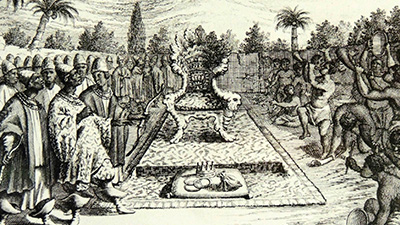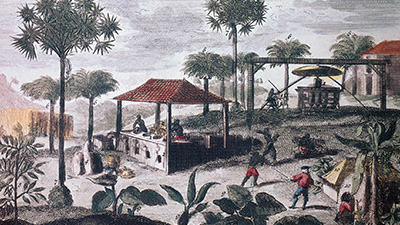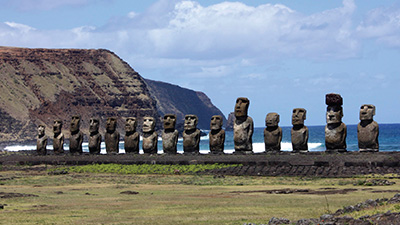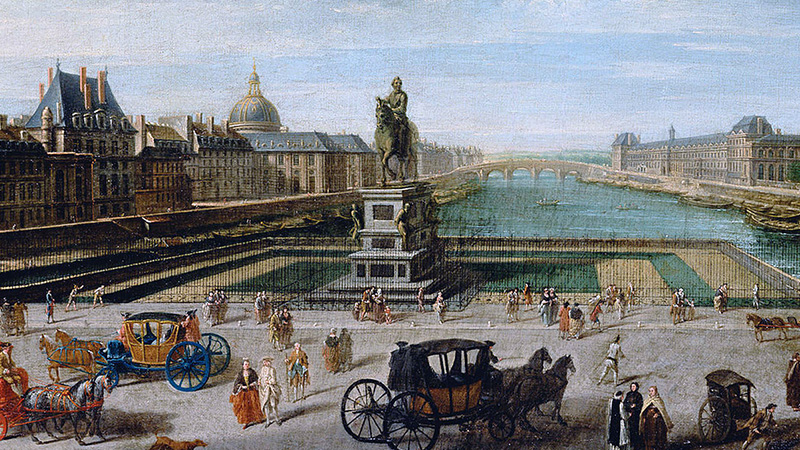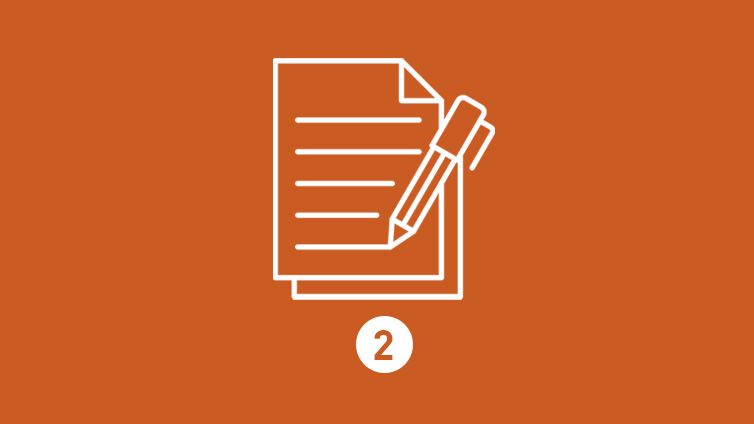Africa, the Americas, and the Pacific in 1750
Teacher Resources
Driving Question: In what ways were states and empires in Africa, the Americas, and the Pacific in 1750 unique and distinctive but also part of global patterns?
By now, you should be well-versed in the characteristics of eighteenth-century states and empires in Eurasia. But what about the rest of the world? In this lesson, we’ll broaden our historical lens by investigating states and empires in Africa, the Americas, and the Pacific in 1750. All these places were eventually affected by the growth of global interconnections.
Learning Objectives:
- Compare the community structures and interactions of eighteenth-century empires in Africa, the Americas, and the Pacific.
- Work on informal writing skills by answering the Unit Problems.
Vocab Terms:
- centralized
- colonial
- ecosystem
- enslave
- migration
- plantation
- racial hierarchy
- raw material
Opener: Africa, the Americas, and the Pacific in 1750
To teach this lesson step, refer to page 3 of the Lesson 1.7 Teaching Guide.
Maps are a powerful tool for teaching historical change. Explore this blog post to discover the many ways maps can enhance your lessons.
Before this globe-trotting lesson, engage your prior knowledge to see what you already know about the regions of study.
Comparing Communities in 1750
To teach this lesson step, refer to page 3 of the Lesson 1.7 Teaching Guide.
Don’t forget—all articles are leveled to support diverse learners, which can be especially helpful in this content-rich lesson step. And the Reading Guide is always available with helpful strategies.
The Comparison One-Pager provides quick, practical tips to help you teach historical comparison more effectively.
Travel around the world as you explore sub-Saharan Africa, the Americas, and Oceania. Once you’re done, test your knowledge of the empires and societies that you read about in “World History, Widened.”
-
Guiding Questions
-
Before you read
Preview the questions below, and then skim the article. Be sure to look at the section headings and any images.
While you read
Look for answers to these questions:
- What are the things that make it hard to study sub-Saharan Africa as a region, and why does this article do so nonetheless?
- What kinds of government systems existed in sub-Saharan Africa c. 1750?
- What sorts of communities and identities were important in sub-Saharan Africa at this time?
- What were some ways in which sub-Saharan Africa participated in production and trade during this period?
- What was the biggest threat to African societies in this era, and how was it changing them?
After you read
Respond to this question: What characteristics of sub-Saharan African societies in 1750 seem unique or distinctive, and what characteristics seem to be part of wider global patterns?
-
Guiding Questions
-
Before you read
Preview the questions below, and then skim the article. Be sure to look at the section headings and any images.
While you read
Look for answers to these questions:
- In your own words, what does the caption below the Colonization of Americas map tell you about the territories?
- How did European empires in America try to control such diverse populations, including enslaved people?
- What were the roles of the Americas in the global economy in this period?
- What were Indigenous American people doing in this period?
- How did enslaved and subordinated people react to being ruled by European empires?
After you read
Respond to this question: What characteristics of American societies in 1750 seem unique or distinctive, and what characteristics seem to be part of wider global patterns?
-
Guiding Questions
-
Before you read
Preview the questions below, and then skim the article. Be sure to look at the section headings and any images.
While you read
Look for answers to these questions:
- Where did the Indigenous people who settled the Pacific islands come from, and what technologies made possible the settlement of this region?
- How were the Māori societies of New Zealand governed around 1750?
- What happened politically in Hawaii between c. 1795 and 1810?
- What was the most important aspect of gender roles in this region?
- How do we know that these societies, which stretched across the Pacific, were connected to each other in networks of trade?
After you read
Respond to this question: What characteristics of Oceania and Pacific societies in 1750 seem unique or distinctive, and what characteristics seem to be part of wider global patterns?
Sourcing
To teach this lesson step, refer to page 6 of the Lesson 1.7 Teaching Guide.
Get ready to teach this essential historical skill with the Sourcing One-Pager, packed with helpful strategies and guidance.
Reading something without any context can be frustrating. Who wrote it? Why was it written? That’s where sourcing comes in.
Snapshots of the World in 1750
To teach this lesson step, refer to page 7 of the Lesson 1.7 Teaching Guide.
Practice quick sourcing as you examine the world in 1750 through the words of the people who were there—gaining insight into how communities were organized, how large and dynamic they were, and who was included and excluded.
European Domination?
To teach this lesson step, refer to page 8 of the Lesson 1.7 Teaching Guide.
Want to bring more informal writing into your classroom? Our Informal Writing Routines are a great place to start!
In this unit, you have examined what history is, how it’s written, and why it matters. You’ve also explored what the world looked like in 1750. Reflect on all that you’ve learned and see if your thinking has changed since the first lesson.
Closer: Africa, the Americas, and the Pacific in 1750
To teach this lesson step, refer to page 3 of the Lesson 1.7 Teaching Guide.
In this unit, not only have you examined what history is, how it’s written, and why it matters, you’ve also explored what the world looked like in 1750. Whew! Reflect on all that you’ve learned and see if your thinking has changed since the first lesson.



